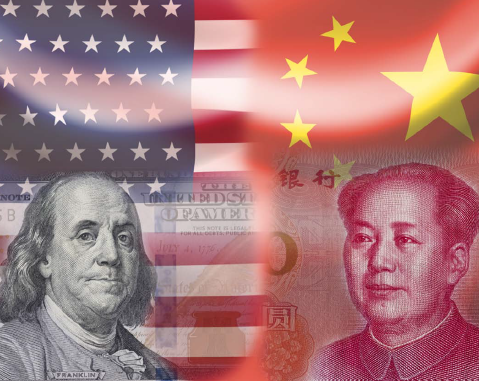China’s Five-Year Plan

USA and China cooperation concept. US America and China flags on chess pawns soldiers on a chessboard. 3d illustration
With the arrival of Autumn, the U.S. Presidential election will increasingly take center stage as the candidates spell out their economic and foreign policy agendas. The outcome is important, not just for the U.S., but for foreign economies as well. Possibly even more consequential is another event happening in the world’s second largest economy. I’m talking about China’s 14th Five-Year Plan, to be unveiled next month. These plans map China’s strategies for economic, social, and environmental development, identify areas for reform and investment, set growth targets for various initiatives, and provide an overall blueprint for policy makers to govern the country. These plans always attract attention around the globe given China’s omnipresence, but this year’s brings potentially greater implications for businesses and markets due to the escalating rivalry with the United States. We expect the upcoming Five-Year Plan, combined with the new confrontational relationship between the superpowers, to benefit a number of investments in our International ADR and Global portfolios (and to suggest new ones). Many of these companies deliver crucial products and services to China, but since they’re not U.S.-based, have less risk of suffering from potential retaliatory measures by China.
Previous Five-Year Plan Initiatives, Details, and Success
These five-year plans are similar to U.S. State of the Union addresses, but are far more specific in terms of implementation detail, as befits a more command-and-control economy. For example, the 12th Five-Year Plan (2011 through 2015) emphasized infrastructure, laying out spending targets for high-speed rail, and set capacity quotas for wind, solar, and nuclear energy. This is also the period where China directed resources and development efforts outside the country through its Belt and Road initiative. The 13th Five-Year Plan (2016 through 2020) focused on innovation with one target specifying the bringing in of “10,000 high-caliber talented individuals from overseas to make innovations and start businesses.” Another initiative stated “Build master studios and 1,200 training centers for highly skilled personnel around the country to train ten million highly skilled workers.” These examples just scratch the surface, but you get the idea of the herculean effort, detailed objectives, and extensive resources directed toward these five-year plans. While early five-year plans (the first one started in 1953) generally failed to achieve their targets, supporting economists’ belief that government commercial interventions are counterproductive, the more recent plans—those starting after 1991—have been more successful. Most of the 13th Five-Year Plan objectives have already been achieved despite the 2020 pandemic. Moreover, studies show China’s government engineering of resource allocation aided the country’s economic development and growth.
Likely 2021 – 2025 Initiatives and Investment Implications
While the 2021 to 2025 Plan details are not yet known, we can make several assumptions given President Trump’s efforts to decouple the U.S. from China and put in place an advanced technology embargo. This is not likely to change regardless of who is in the White House. Clearly, these threats will induce China to pursue greater self-sufficiency in critical technologies. The immediate concern is semiconductors, but we also expect specific goals for robotics, software, and artificial intelligence. Research and Development spending, already relatively high in China, should accelerate. Educational trends reflect the technology emphasis. China’s STEM (Science, Technology, Engineering, and Mathematics) graduates in recent years number more than eight times the number of U.S. graduates in these fields. (The U.S. still leads in STEM PhDs, but barely). Also, China overtook the U.S. in science and engineering publications in 2016, and now only trails the European Union. Self-sufficiency may be the goal, but for the immediate future, China will have to rely on many outside sources to help their technology progress. Being the largest trade partner with Europe and Asia, there are many companies in these regions eager to support China’s further development.
These trends induced us to invest in several non-U.S. companies which should benefit from China’s technology and semiconductor goals. This includes a German company providing highly specialized materials and chemicals necessary for integrated circuit patterning and wafer production; a Swedish company whose equipment ensures this process occurs in an ultra-pure air environment; and a Japanese company specializing in precision cutting equipment and other products for the “back end” semiconductor process of assembly and packaging. For each of these companies, China represents a meaningful and growing piece of their revenues. For software, we’ve invested in an Ireland-based consulting company helping many Chinese businesses migrate their mission-critical software, business applications, and omnichannel commerce systems to the cloud to lower costs and improve efficiencies.
Greater efficiency and enhanced productivity will be another Five-Year Plan goal. This has a long runway, as China’s labor productivity is less than 20% of America’s. More capital spending and greater installation of advanced production systems are needed to improve this area of manufacturing. Here we’ve invested in a leading French industrial automation company. The French firm shows their Chinese clients how to digitize their business, introducing software and robotics to lower production costs, reduce maintenance downtime, and conserve energy. We’ve also invested in a German software company which provides enterprise-wide software systems to help Chinese companies better link all their different business functions from input purchases, human resources, accounting, sales, distribution, and analytics. Their China sales are relatively small, but growing rapidly.
Another investment includes an Asian regional shipping company. The fractured U.S. and China relationship has depressed trade between the two countries, but China’s overall trade continues to grow largely due to growing intra-Asia trade. Indeed, trade volumes from the Far East to North America as well as volumes from the Far East to Europe have declined in 2020, while intra-Asia volumes remain resilient, showing year-over-year growth since June. Our Hong Kong-based shipping company operates exclusively in the intra-Asia market and continues to benefit as the region becomes more integrated. The Five-Year Plan will likely seek acceleration of these developments, and will, no doubt, focus on achieving greater regional cooperation already started by the APEC, ASEAN, and the Shanghai Cooperation Organization platforms.
Lastly, the challenging external environment suggests China will more urgently pursue domestic demand growth. For this theme, we’ve invested in a China-based company providing sports apparel. The company has a strong brand, unparalleled distribution, and should benefit from the likely Five-Year Plan’s guidelines to increase urbanization.
Undoubtedly, there will be other investment themes revealed when China’s newest Five-Year Plan becomes known. Rest assured, we’ll seek to find additional high-quality, reasonably-priced investments to benefit from this development.




















































LATEST ARTICLES